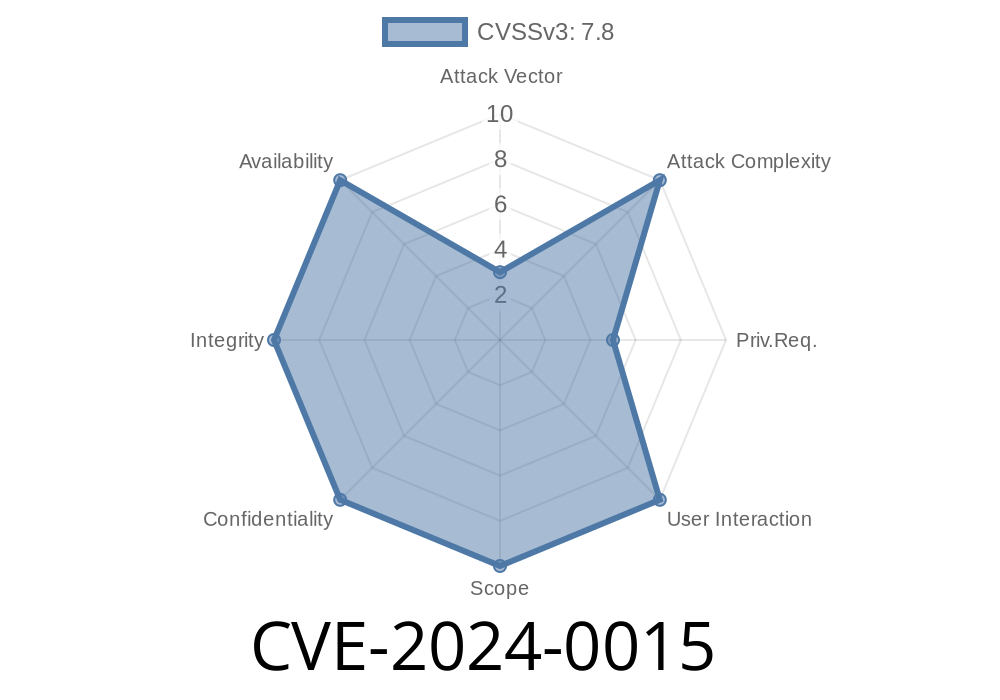The CVE-2024-0015 vulnerability presents a way to launch arbitrary protected activities through intent redirection, potentially leading to local escalation of privilege. This vulnerability could allow user execution privileges without requiring user interaction. In this post, we will take a deep dive into the issue, the affected code, and exploit details. The information provided here will help you understand the vulnerability and take the necessary steps to protect your system from potential attacks.
Vulnerable Code
This vulnerability exists in the convertToComponentName() function of the DreamService.java file. An attacker could misuse the intent redirection feature to launch protected system activities that should be inaccessible. The function takes an input as a string and tries to convert it into a component name.
Here is the code snippet of the affected function
public static ComponentName convertToComponentName(String componentString) {
if (componentString == null) {
return null;
}
ComponentName componentName = ComponentName.unflattenFromString(componentString);
if (componentName != null) {
return componentName;
}
throw new IllegalArgumentException("Malformed component name: " + componentString);
}
Exploit Details
An attacker could create a malicious app that sends intents with arbitrary component strings, possibly launching protected system activities that should be inaccessible. This could allow the attacker to escalate privileges within the context of an affected app. User interaction is not needed for exploitation.
The app triggers the convertToComponentName() function with a crafted component string.
3. The function processes the component string, and the malicious app gains access to otherwise protected system activities.
4. The attacker could leverage this access to escalate privileges within the context of the affected app.
It is crucial to note that user execution privileges are required to exploit this vulnerability successfully. Therefore, the attacker would need to execute malicious code on the target device to initiate the attack.
Mitigation
To protect your app from CVE-2024-0015, we recommend that you follow the secure coding best practices, such as validating input strings and handling intents safely. Specifically, you may want to:
1. Use input validation methods to ensure that the component string entered into the convertToComponentName() function is well-formed and does not contain malicious data.
2. Carefully handle intents sent to your app, especially when the component name is specified. Consider verifying the authenticity of the calling apps and restricting access to protected activities only to apps with the necessary permissions.
For further details on the CVE-2024-0015 vulnerability, you can consult the following references
- CVE-2024-0015 - Android Security Bulletin
- OWASP - Secure Coding Practices
- Android Developers - Intent Redirection Vulnerability
Conclusion
CVE-2024-0015 is a vulnerability that could allow attackers to launch arbitrary protected activities through intent redirection, potentially leading to local escalation of privilege. Understanding the details of this vulnerability and the securing measures is vital to protect your app and its users. By following the secure coding best practices and implementing the mitigation steps, you can minimize the risk of an attacker exploiting this vulnerability.
Timeline
Published on: 02/16/2024 19:15:08 UTC
Last modified on: 08/28/2024 17:35:03 UTC
